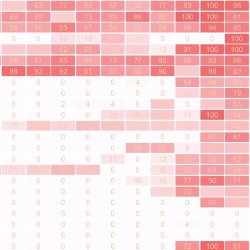The worldwide attention to influenza prevention has been resulted in increased availability of influenza surveillance data in the recent years. In 1997, WHO launched FluNet, the first web-based tool for global influenza virological surveillance. We are developing methods to examine factors that modify the timing and intensity of seasonal influenza in data-rich and data-limited settings. We are targeting countries with limited recourses or depleted economies due to natural disasters or humanitarian emergencies, where the quality and availability of reporting is still insufficient for developing reliable forecasts. Our research proposes a method to enable seasonal forecasts in data-sparse settings by triangulating temporal patterns observed in data-rich countries.

Calendar Effects in Forecasting Influenza
We examined the impact of school holidays, social events and religious observances for six age groups on four influenza outcomes (tests, positives, influenza A, and influenza B) as reported by the City of Milwaukee Health Department Laboratory, Milwaukee, Wisconsin from 2004 to 2009. Social outings can trigger influenza transmission, especially in children and elderly. In contrast, school closures are associated with reduced influenza incidence in school-aged children. Overall, calendar effects depend on the proximity and alignment of an individual holiday to age-specific and influenza outcome-specific peak timing.
- Simpson RB, Alarcon Falconi TM, Venkat A, Chui KH, Navidad J, Naumov YN, Bhattacharyya S, Naumova EN. (2019). Incorporating calendar effects to predict influenza seasonality in Milwaukee, Wisconsin. Epidemiology & Infection, 147, E268. doi: 1017/S0950268819001511
- Simpson RB, Venkat A., Alarcon T, Chui K, Naumov Y, Gorski J, Bhattacharyya S, Naumova E. (2019). Calendar effects to forecast influenza seasonality: A case study in Milwaukee, WI. Online Journal of Public Health Informatics, 11(1). doi: 5210/ojphi.v11i1.9739
- Simpson RB, Alarcon Falconi TM, Venkat A, Chui KH, Navidad J, Naumov YN, Bhattacharyya S, Naumova EN. (2019). Incorporating Calendar Effects to Predict Influenza Seasonality: A Case Study in Milwaukee, Wisconsin (2004-2009). 2019 ISDS Annual Conference. International Society for Disease Surveillance Conference. San Diego, CA. (Poster Presentation)
- Simpson RB, Venkat A, Marshak A, Alarcon Falconi TM., Naumova EN. (2018). Calendar Effects and Influenza: Lessons from Milwaukee, WI. 2018 Winter Boston Chapter Meeting. American Statistics Association. Boston, MA. (Oral Presentation)
- Simpson RB, Venkat A, Marshak A, Naumova EN. (2018). Exploring Calendar Effects on Influenza. 16th Annual Freeman Symposium on Infectious Diseases. Harvard University. Cambridge, MA. (Poster Presentation)

Forecasting Influenza in Data Sparse Settings
After 2009 “swine flu” outbreak the national surveillance systems have improved worldwide. Yet, in countries with limited recourses or depleted economies due to natural disasters or humanitarian emergencies, the quality and availability of reporting is still insufficient for developing reliable forecasts. To understand influenza transmission dynamics in a continental scale, we extracted FluNet records in Latin America. spanning numerous timeframes with varying degrees of availability, accessibility, completeness, and comparability of records. This project is focusing on the complexity of forecasting in presence of missingness.